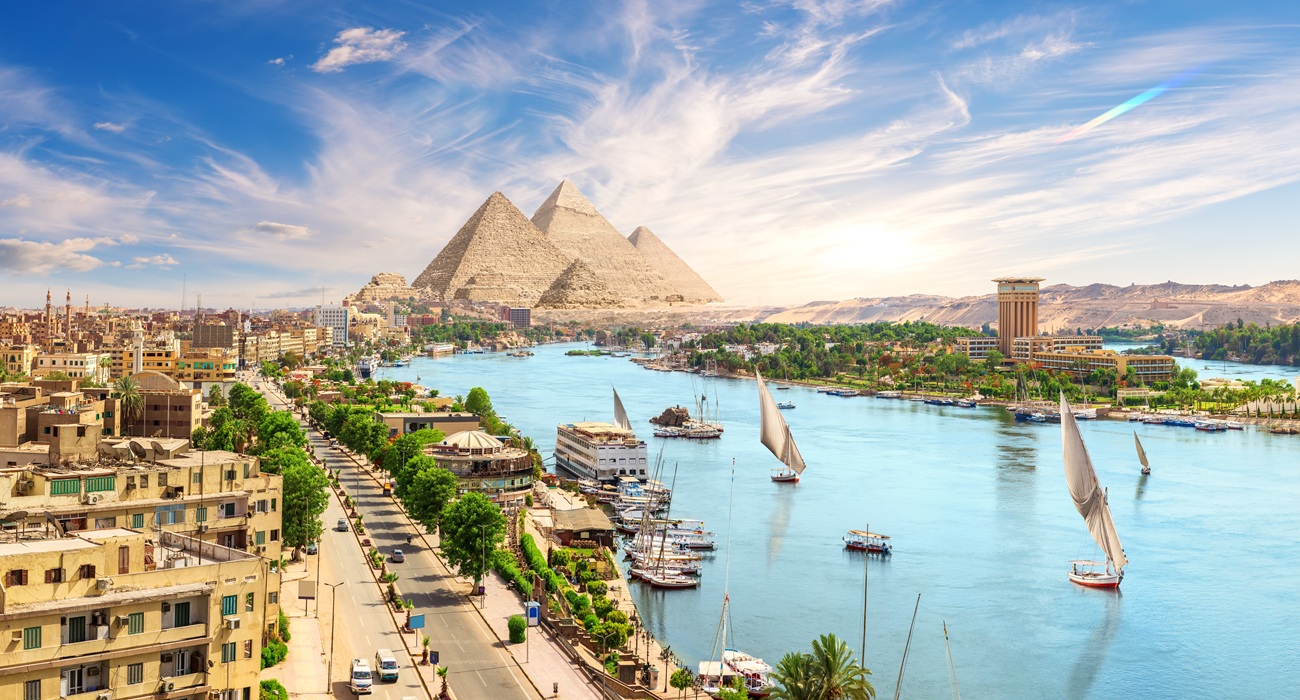A New Chapter for Egypt’s Economy: The GEM Redefines Investment Opportunities
Updated 11/2/2025 9:00:00 AM
The world witnessed more than just the opening of a museum on November 1st. With the launch of the Grand Egyptian Museum (GEM), Egypt has started its most ambitious economic strategy in decades. While the globe celebrates a new wonder of cultural heritage, the real event for the investment community is the activation of the GEM as a powerful engine for foreign direct investment (FDI).
Tourism has long been a cornerstone of Egypt’s economy, contributing an estimated 8.5% to the nation's gross domestic product (GDP) in 2024 and supporting 2.7 million jobs, according to the World Travel & Tourism Council’s (WTTC) Economic Impact Research (EIR).
With the GEM’s doors open, the government’s formidable goal of attracting 30 million tourists annually by 2028 is shifting from ambition to active pursuit. The multi-billion-Egyptian-pound museum is Egypt’s new reality and a clear signal to investors that the time to engage with it is now.
Leveraging Culture as an Investment Magnet
The GEM’s opening activated a long-planned strategic pivot, leveraging cultural assets as dynamic investment magnets. It represents Egypt as a modern state capable of utilizing its rich heritage to structure its future, as expressed by Abdellatif El-Menawy in his article "Grand Egyptian Museum reshaping Egypt’s image."
By launching a globally celebrated institution that guarantees high-volume customer traffic, the state has already de-risked private investment. To streamline this process, Minister of Tourism and Antiquities Sherif Fathy announced the formation of a dedicated unit to monitor and promote investment opportunities. The initiative, described as an “investment opportunities bank,” will present available projects across the tourism and antiquities sectors.
This proactive approach aims to remove ambiguity and streamline capital deployment. For investors, the GEM’s success mitigates market risk and creates a predictable, high-volume flow of customers for any ancillary business.
Clear Roadmap for FDI
The government’s ambitious 30-million-tourist target cannot be met with existing infrastructure alone. This gap creates a clear and compelling roadmap for FDI across several key areas.
First is hospitality infrastructure. To accommodate the expected surge in visitors, an estimated 19,000 new hotel rooms are slated for development in 2025 alone, as announced by the Minister of Tourism.
Demand is particularly acute in the luxury and five-star segments. However, Moataz Amin, CEO of Prime Hospitality Group, believes a more pragmatic approach is essential.
"The goal of attracting 30 million tourists comes with adding 400,000 hotel rooms to accommodate the number of tourists," he notes. "A more pragmatic approach would be to transform existing residential buildings into hotel apartments or serviced apartments. This strategy is both time- and cost-efficient.”
This highlights a key investment niche in retrofitting and upgrading existing structures to meet hospitality standards.
Second, the success of Egypt’s tourism hinges on sustaining the guest experience through a holistic approach, where all service factors are "led with firm instructions and laws, plus education and awareness campaigns". Amin notes that the "guest experience is a wide spectrum," starting from the moment a tourist arrives.
"The factors start from the airport, as it is the country's check-in and check-out point," he explains. This highlights vast opportunities in service-sector training, digital infrastructure, and logistics management, all ripe for public-private partnerships.
Third, there is a significant push toward sustainable and digital tourism. The GEM itself has set the standard by becoming the first museum in Africa and the Middle East to receive an EDGE Advanced green building certification. This focus on sustainability is a strategic move to attract a new class of ESG-conscious travelers and investors. Opportunities abound for developing eco-friendly resorts and creating digital platforms for smart-city services.
Finally, the roadmap extends to ancillary services. The GEM’s ripple effect will fuel demand for high-end retail, fine dining, and modern transportation logistics. To back this vision, the government has launched a significant EGP 50 billion financing initiative, demonstrating a clear commitment to a public-private partnership model.
This initiative offers low-interest loans at a subsidized diminishing interest rate of 12% for up to five years to tourism companies. It aims at upgrading hotels and fleets, constructing new hotel rooms, and converting non-operating buildings into hotel facilities.
Financing is capped at EGP 1 billion per client, or EGP 2 billion for a client and its related entities, with priority given to development projects in Greater Cairo, Luxor, Aswan, the Red Sea, and South Sinai.
In return, beneficiaries are required to sell 40% of their foreign currency revenues through the banking sector, ensuring the program supports national reserves and economic stability.
Driving Profitability and Economic Diversification
The museum's anticipated impact on revenue is expected to be as significant as its impact on visitor numbers. While the opening may not trigger a uniform spike in hotel occupancy across Cairo, it will fundamentally alter the city's hospitality dynamics.
According to Amin, specific areas are expected to see concentrated benefits. "I cannot forecast a tremendous occupancy increase across all of Cairo, but the Giza area and downtown should reach higher levels of room nights," he predicts.
The key to maximizing returns, Amin adds, lies in sophisticated revenue management. "With proper and professional yield management done by hotel revenue departments, we will see a higher average daily rate (ADR), to be reflected instantly on room revenues". This shifts the focus from mere occupancy to increased profitability per guest.
Furthermore, Amin emphasizes, "Marketing campaigns by tour operators and destination management companies play a vital role," highlighting another crucial area for investment and partnership.
For the national economy, achieving the goal of 30 million tourists is projected to significantly elevate the tourism sector's GDP contribution to around 10% of the total economy. This growth will be a powerful engine for job creation, as projections show the sector could support 2.9 million jobs in 2025, a figure that would grow substantially with increased investment, as per the WTTC report.
The GEM’s significance extends beyond bringing in tourism revenues; it is to create a more resilient and diversified economic base, fostering skills in archaeology, hospitality, and digital marketing.
The world is watching. The opening of the GEM is not the end of a construction project, but the beginning of a new economic era. It invites investors to look beyond the artifacts and see the architecture of a sophisticated, multi-faceted growth strategy.
By: Sarah Samir
Related News











